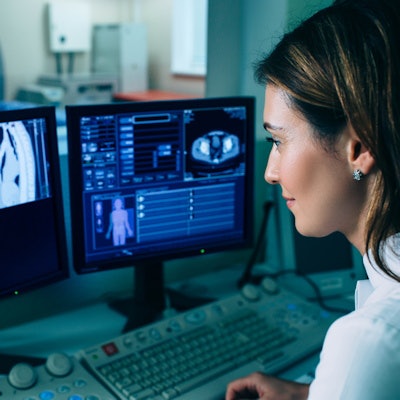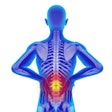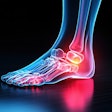
Eye strain can be a frequent issue for radiologists, a problem exacerbated by higher exam volumes, the increasing complexity of imaging studies, and the pressure to maintain turnaround times.
 Dr. Talia Vertinsky.
Dr. Talia Vertinsky.One of the first to draw attention to this issue was Dr. Talia Vertinsky of the University of British Columbia in Vancouver. In 2005, Vertinsky and colleague Dr. Bruce Forster published a landmark study in the American Journal of Roentgenology that found eye strain to be common among radiologists.
AuntMinnie.com recently conducted a Q&A interview with Vertinsky to get her perspective on how the radiologists of today are being affected by eye strain and what steps they can take to boost their longevity while interpreting exams at their practice or at home.
Q:How common is eye strain and visual fatigue in radiology?
A: Image volumes have gone up since I did my study, but I would say it's likely that most radiologists experience some form of eye strain at some time in their weekly practice. It will probably be a smaller number that experience eye strain as a daily or consistent phenomenon. And it's likely related to fatigue and the amount of images reviewed and the amount of time spent at the workstation and their breaks. That parallels our study in 2005 and my own personal experience.
Q: Do you think this problem has gotten worse as imaging studies have gotten more complex?
A: The things that would contribute to the problem would be rapid turnaround time and high image volume studies such as CT angiograms, for sure. Comparing back to 2005, certainly there's been a big change in the volume of images that we look at every day and that is definitely a factor.
Q: What were the key findings from your 2005 paper?
A: The number one finding that was most practical and useful was getting up once every hour and taking frequent short breaks, moving away from your workstation, and especially if you could go to a place with natural light. That was the number one finding and it really superseded the findings of differences in practice, differences in age, etc. There was also a relationship with some ergonomic factors.
Q: How important is keeping track of visual fatigue in the context of personal wellness and burnout?
A: Visual fatigue is a signal that there's some imbalance in your practice. Usually, visual fatigue is a sign that you're heading toward burnout. It can be a really good indicator that either the number of days that you're working in a day or the number of hours you're working, or the volume of studies that you're reviewing in that time are too much for you. And it's a good marker for wellness that you need to pay attention to.
Usually, visual fatigue goes along with other types of fatigue and other types of burnout, so when people aren't feeling good and generally functioning well in the work environment, the threshold of visual fatigue would be lower. It's a lot like things like back pain and neck pain, where that can be a sign that there's also some other things that are going on. Your tolerance of your volume of work not only has to do with the tolerance that everybody else has, but also how you're doing in the workplace and if you have stressors at home that are putting extra strain on your nervous system.
Q: Do you have a sense as to whether reading from home could make this issue worse during the pandemic?
A: That's a really good question. Working from home, theoretically, should improve things because you're more able to personalize your workstation and you might be more able to take breaks. But I think it really depends on a number of things. I think it depends on how well the home workstation environment is set up, how much investment is put into having an adjustable workstation, a properly lit room, and how much infrastructure people will have at home in terms of available space and space away from their children and partners and older kids so that they can focus on their work.
There are so many factors, and I think that would actually make for an interesting study in the future to look at the factors in home practice for radiology and whether it's actually an advantage for the system and if people experience less burnout by being able to work at home at times. Or if it actually adds extra stressors or whether accuracy of image interpretation is improved or made worse through not being in hospital environments.
Q: Would it be difficult to monitor everybody's home environment to make sure it's all ergonomic and conducive to reducing the eyestrain?
A: There are a few key things. In my experience, adjustable workstations have had the biggest impact on my workstation ergonomics. For all computer workers, having the ability to move between sitting and standing has been signaled as a really good approach.
I now use this approach where I sit part of the day and I stand part of the day and I go between it. I found that this has actually really improved how I feel at the end of the day. There are certain things you can ask about in a survey format, such as if they have an adjustable workstation and are able to stand, and the presence of ambient light or whether they have an isolated workspace.
Q: What other habits can radiologists adopt to prevent eye strain?
A: Make sure that at least every hour, take at least a few minutes to stand up and move away from your workstation. Try to focus far away and really stop looking at a computer for a short period of time. That's the number one practical thing you can do that is realistic for everybody to do.
If people are having significant eye strain, the first thing you need to do is really make sure that you don't need a vision prescription and that your eyes have been checked, and if you need a prescription, that you're wearing appropriate eyewear. Aside from those modifiable factors, I think you need to look at your working environment, how much you're working each day, how many days you're working in a row that you're working, etc, and other factors that are influencing vision fatigue.
Q: What other resources are available to radiologists on this topic?
A: It really depends on where you practice. There are quite a lot of resources I have discovered within hospitals in terms of assessing people for proper workstation ergonomics and in terms of wellness -- both wellness committees and also occupational health.
You really have to dig to find the appropriate resources. There are a lot of resources online about eyestrain and about proper computer ergonomics. It's really simple what you need to do in terms of proper workstation setup. But you can imagine if you're working in a place with multiple people, and this is a problem that a lot of radiologists experience, you may not have a personalized workstation or there may not have been an investment in the appropriate workstation ergonomics.
I've worked in some environments where literally the chairs and tables are 30 years old. But most of the environments that I work in now, we've insisted on replacing workstations with adjustable workstations with proper office chairs that are fully adjustable and with proper armrests.
Usually, there's somebody in the workplace like myself who takes a personal interest in ergonomics. But if that's not the case, there are a lot of resources online and a lot of helpful therapists that will assess your posture and give you exercises to strengthen your core and help you to sit properly.
There's many movement techniques and there's a lot of ways to learn to sit properly and also in terms of fatigue and wellness. There's mindfulness practices and you can kind of go on from there.
Q: Are there any other relevant health-related issues to be aware of?
A: The visual system is really integrated into your musculoskeletal system and your nervous system, so it's important to look at your work environment holistically. Some people like to separate out issues such as ergonomics and musculoskeletal issues, but they are so intertwined and related that it's very important to have a proper workstation setup.
We could have all of these things in radiology. But we haven't until this time placed a lot of priority on it. It seems, though, that there's more interest in how to work smarter and how do we find longevity in our practice now that many of us are working well past the age of 65. We need to have ergonomics; we can't just look at visual strain. We need to be settled and mindful in our radiology practice.
I feel like radiology is a wonderful profession, and we're very lucky to be part of it. And I'm really happy that people are looking at how they can really have longevity and comfort in their radiology practices. I think it's a worthwhile pursuit.
The time that I invested in how I sat and improving my own personal workstation ergonomics I feel has paid off a lot. The expense for your workstation and proper lighting will pay back many-fold in the future. It's such a simple intervention and we can get a lot of bang for our buck for it.




















